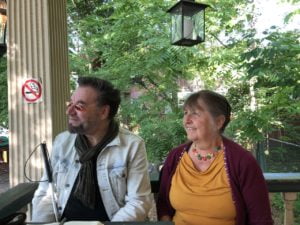Aylmer, an architectonic heritage museum
For many travelers, historic or cultural heritage sites provide an opportunity to be transported to a different time or place, immersing visitors in a landscape outside of the contemporary experience. This paper will consider history of a certain Mies of Aylmer that, by making historic architecture available to the international public, aimed to encourage patriotism and civic pride in a shared heritage, and to provide a ‘historical’ experience for visitors. While preservation and accessibility are prized as modern heritage requirements, these sites were initiated to accentuate the morality or ethics of previous generations, and only later enhanced to encourage tourism.
These sites, therefore, present an interesting interpretation conundrum, juxtaposed between authenticity, reconstruction, and revenue. At the center of this is architectural reconstruction and restoration as a tourism backdrop, where authentic buildings provide imagined temporal scenery. The removal of buildings from their original site, or the restoration of buildings to a selected place and time, contrast with many modern historic preservation practices, particularly the authentic representation of a building’s cultural context. These decontextualized buildings can become popular objects of tourism consumption: artifacts representative of history, but experienced singularly without a broader understanding of their creation.
Heritage, Authenticity, and Tourism
History, simply understood as a documented series of events, is often used as evidence to support particular identities and traditions. While history is not considered to be ‘agenda free’, cultural production drives the interpretation of personal or shared heritage. Where history claims objectivity, heritage is subjective, and often influences an individual or group understanding of history. Heritage participants select historical events, persons, cultures, or artifacts with which to identify, suggesting that heritage is seemingly exclusive to participants, History is for all, heritage for ourselves alone. Heritage or shared memory helps strengthen group bonds and a felt connection to history, but as these connections are fostered, the interpretation of history can be skewed as events, people, or places are chosen for presentation.
An unloved gem. The 100 Lucerne Boulevard reveals Mies Van der Rohe to the Aylmer Society:
The Collaborators,
Micheline Lemieux, President of APA-AHA
Luc L. Paquette, Prof, Researcher and Consulting Lobbyist



Leave a comment